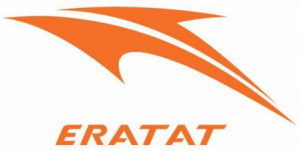|
|
#1 Blumont Group Ltd 
What happened: At the height of investors’ interest in natural resources company, Blumont, its shares were trading at over $2.45 apiece in the 3rd quarter of 2013 after surging close to 800% in the space of nine months. Today, its shares are worth approximately $0.001, basically next to nothing (as this is the lowest value shares can trade at).
This spectacular rise and subsequent dip in its share price, along with two other related companies, LionGold Corporation and Asiasons Capital Limited (now Attilan Group Limited), over a three-day period sparked one the worst market runs in the history of the Singapore Exchange, wiping out close to $8 billion off the local exchange.
How it ended: In 2014, the regulators took Malaysian businessman and mastermind of the operation, Soh Chee Wen, his girlfriend, Quah Su Ling, and an associate, Goh Hin Calm, to task in relation to fraud in one of the most serious and complex cases of market manipulation in Singapore.
#2 Linc Energy Ltd

What happened: Linc Energy’s Singapore listing was seen as sort of a coup for SGX as the innovative energy firm, spearheading underground coal gasification technology and with high quality oil and gas assets in North America and Australia, leaving the Australian bourse for Singapore, citing its global appeal and access.
Shortly after its arrival in the Singapore market, the Australian authorities began cracking down on a possible site contamination by the company at its local testing facility which left four employees sick, with suspected gas poisoning.
This resulted in the company being taken to court to bear the cost of cleaning up the lands around its testing facility in Australia.
At the same time, it was hit by the weak oil and gas market which crippled its operations and ability extract its oil reserves.
This resulted in growing debts for the company adding up to over A$320 million.
How it ended: The company is in the process of being liquidated after creditors unanimously voted to put it into administration. This was after the company was unable to raise funds amid the tough oil and gas environment, especially with criminal proceedings looming in the background.
Linc Energy founder, Peter Bond, is now in court, along with four other senior executives fighting charges for failing to comply with the country’s Environmental Protection Act.
Linc Energy’s shares: Linc Energy’s shares were suspended in March 2016. Its liquidators have sold some of its assets, and has filed for a one-year extension to submit a proposal to resume trading with SGX.
This means shareholders will continue to be in limbo until liquidators can realise the full assets of Linc Energy and ultimately disburse the amount.
#3 Swiber Holdings Limited
What happened: During its prime, Swiber was trading at over $6.16 in 2007. The company was performing well and winning new and bigger contracts in the oil and gas industry. It was even listed as “Best under a Billion” in the late 2000s.
By 2016, after weathering a downcycle in the oil and gas industry for over a year, it was left facing hundreds of millions of dollars in debt and weak business prospects. This culminated in the company filing for judicial management.
How it ended: Swiber’s business gradually deteriorated after the slump in the oil and gas markets. In 2015, it posted losses of over US$27 million. By 2016, Swiber became one of the biggest casualties of the oil and gas slump in the Singapore market.
It had also defaulted on bond payments due at the end of that year, which affected many investors in Singapore who had been sold the high-yield bonds.
Swiber’s shares: By the time its shares were suspended from trading in July 2016, it was trading at just $0.109. Its shares are still suspended today, and the management is still working to liquidate its assets.
#4 Saizen Real Estate Investment Trust (REIT) 
What happened: Saizen REIT sold off its entire portfolio of Japanese residential properties for $542.8 million to Japan-based Triangle TMK in March 2016. This was at a 3.4% premium to its appraised asset value, and 36.9% above the closing price immediately prior to the announcement.
How it ended: As expected, its shares dipped to under $0.03 per share after selling its assets and distributing most of the proceeds to unitholders in March 2016. The deal effectively rendered Saizen REIT a cash trust.
In the next one year, its share price turned volatile as it seeked new business. In August 2016, it entered into an official agreement with Malaysia’s Sime Darby to explore the possibility of an reverse takeover (RTO) deal to inject its Australian properties into the company.
Saizen REIT’s shares: Saizen REITs share price began a period of see-saw on the back of several announcements regarding the possible RTO deal with Sime Darby.
On 1 October 2016, its share price plunged to $0.03 after announcing that it could not reach an agreement with Sime Darby on a proposed RTO deal. Just a few days later, on 10 October 2016, it announced it that the RTO agreement with Sime Darby was proceeding with an injection of 20 industrial properties in Australia into the REIT. This caused its share price to rocket to the $0.06 level once again.
On 3 January, it announced that the proposed RTO would be delayed due to “the transaction process taking longer than originally envisaged.” While this did not spook investors, it finally announced on 10 March that the RTO was not feasible – this pushed its share price back down to under the $0.03 level.
Trading in the REIT’s shares was suspended from 16 may 2017 at a price of $0.033, and it has since announced that the company will be liquidated and unitholders will receive $0.03378.
#5 Eratat Lifestyle Limited
What happened: Eratat was getting lots of investor interest with growth story – increasing sales and profit figures as well as healthy cash position. The company was also moving into premium segments of its market to boost profitability.
 Lin Jiancheng (above), disgraced CEO of Eratat Lifestyle: ♦ He was legal representative of Eratat subsidiary HMW, which was found to have huge discrepancies in its bank accounts. ♦ He subsequently refused to cooperate in investigations. For more info, click here for Eratat's statement. |
Abruptly, on 29 January 2014, trading of Eratat shares was suspended. It emerged that Eratat had defaulted on its bond interest payments, and as a result, the bondholder was going to redeem the bond.
It further emerged that the company’s Audit Committee was unable to get satisfactory answers from the CEO as to why this happened when it had sufficient funds to pay it off. The CEO was subsequently suspended from his duties.
The Audit Committee tried to verify Eratat’s bank balances in China but could not verify this after its bank stated there were “discrepancies” in the statements. After further liaison, the Audit Committee found that instead of the RMB577 million indicated by the CEO in an online transcript, the company had less than RMB74 million. In addition, it also owed previously unreported bank borrowings and trade bills of RMB64 million.
How it ended: On 30 May 2014, the company filed a report with The China Banking Regulatory Commission (CBRC) based Fujian and the Commercial Affairs Division (CAD) in Singapore.
On 18 August 2014, the company released an announcement stating that the CBRC had confirmed that the CEO of Eratat was found to have forged bank documents. Even worse, he had used the bank’s premises to hand forged bank statements to the Audit Committee.
Eratat’s shares: On 28 August, Eratat was placed under judicial management. On 12 Jan 2015, the company announced that it was in talks with a real estate company to transfer its listing status.
After close to 30 months of judicial management, there was no prospect for any corporate rescue of restructuring and the company announced that it would be delisted on 19 June 2017.
| What You Can Do To Protect Yourself |
|
Only in hindsight can we tell that investing in these companies was a really bad move. However, there are some red flags you can look to when making investments to try to avoid bad investments. In addition, you could also heed some basic investment advice when it comes to growing your wealth in the long-term. |
This article is republished with permission from Dollars and Sense.








